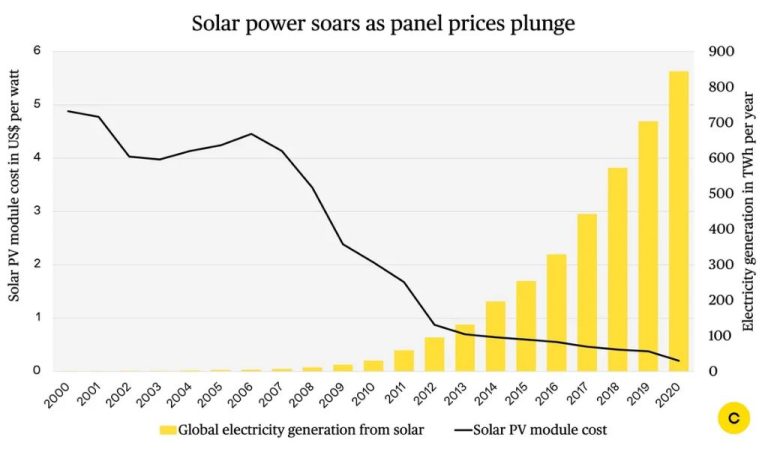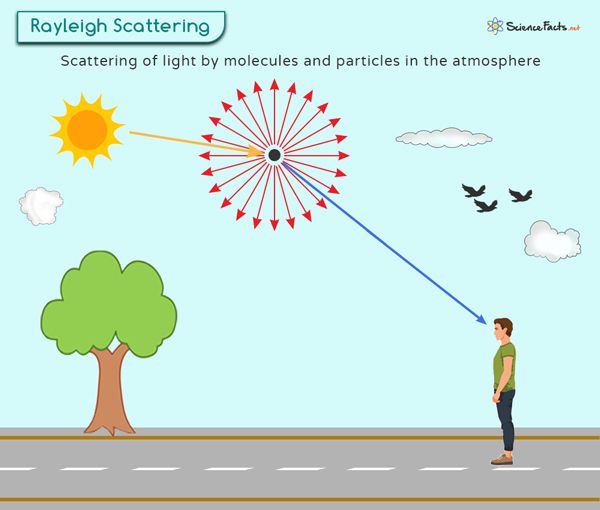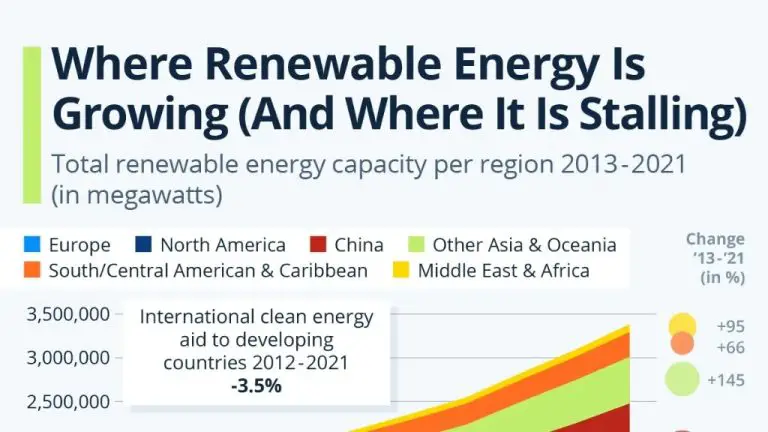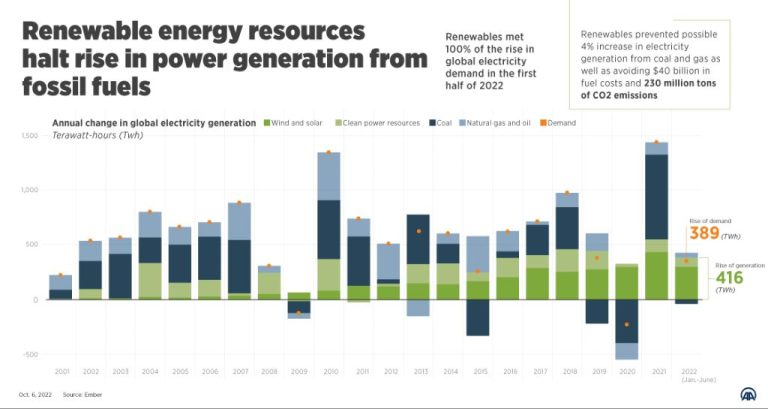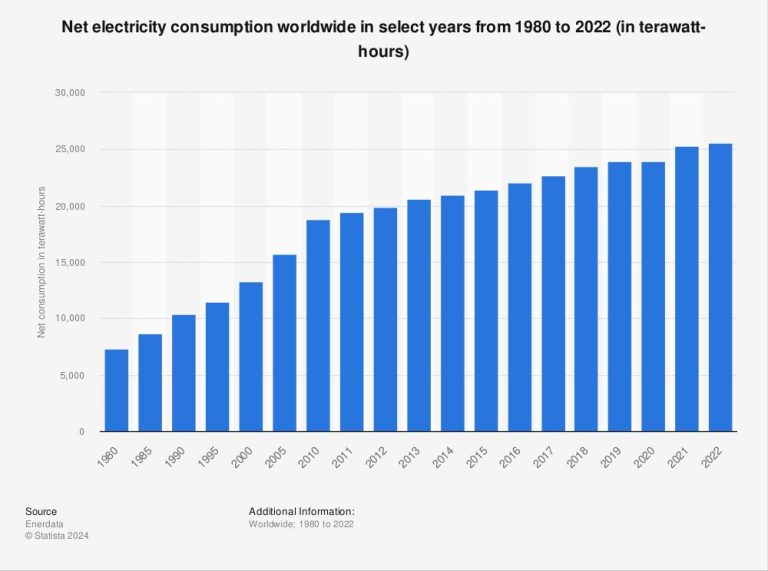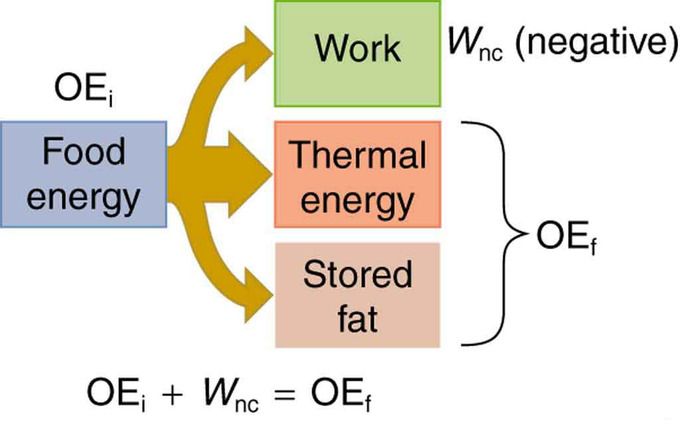What Are The Segments Of The Renewable Energy Market?
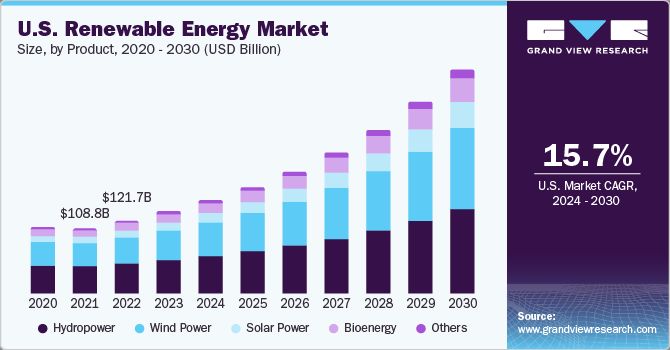
The renewable energy market can be divided into several key segments focused on harnessing different natural resources. The main segments include solar, wind, hydroelectric, bioenergy, geothermal, ocean energy, and hydrogen energy. There is also a growing market for energy storage solutions. Renewable energy provides sustainable alternatives to fossil fuels and supports the transition to a lower-carbon economy. The market has experienced rapid growth in recent years as costs have declined and concerns about climate change have increased. Key factors driving market growth include supportive government policies, technology improvements, and falling costs. Significant investments and capacity expansion are occurring worldwide across the various renewable energy segments.
Solar
Solar energy is one of the fastest growing renewable energy sources in the United States. According to the U.S. Energy Information Administration, as of January 2023, 73.5 gigawatts (GW) of utility-scale solar capacity was operating in the United States, accounting for about 6% of total U.S. electric capacity (U.S. Energy Information Administration).
The U.S. solar industry continues to expand, with over 6.5 gigawatts-direct current (GWdc) of new solar photovoltaic (PV) capacity installed in Q3 2023 alone. This represents a 35% year-over-year increase in solar installations (U.S. Solar Market Insight | SEIA). Solar PV, which converts sunlight directly into electricity using semiconductor materials, makes up the majority of installed solar capacity.
In addition to utility-scale solar farms, the residential solar market is also growing rapidly. Homeowners are increasingly installing rooftop solar panels to reduce electricity bills and their carbon footprint. The U.S. residential solar market is expected to continue expanding in the coming years.
Solar thermal technologies that produce hot water or space heating are also gaining some market share, though less so than solar PV. Concentrating solar power (CSP), which uses mirrors to focus sunlight for electricity production, represents a small fraction of U.S. solar capacity.
Wind
Onshore wind power involves harnessing the wind on land using large wind turbines, while offshore wind power refers to turbines located in bodies of water, usually oceans, lakes, and rivers. Over the last decade, wind power capacity and generation have grown rapidly. According to The Global Wind Energy Council, global installed wind energy capacity reached 743 GW at the end of 2019, a nearly tenfold increase over the previous decade. In 2019 alone, 60 GW of new wind power capacity was added globally.
Many countries have been rapidly expanding their wind power capacity in recent years. As of 2020, the top five countries for total installed wind power capacity are China, the United States, Germany, India, and Spain . Together, these five nations account for over 70% of global wind power capacity. China leads with over a third of total global wind capacity.
The growth of the wind energy market is being driven by policy support, technology improvements leading to falling costs, and the increasing competitiveness of wind power. Both onshore and offshore wind are expected to continue growing rapidly in the coming decade, with much of the growth concentrated in Asia, Europe, and North America.
Hydroelectric
Global hydroelectric power generation was estimated at 4,340 TWh in 2020, accounting for around 16% of total electricity generation worldwide according to the International Hydropower Association (https://www.internationalhydropower.org/hydropower/hydropower-global-status).
Hydroelectric power utilizes the energy from flowing water to generate electricity. There are several types of hydroelectric facilities:
- – Large hydro: hydroelectric dams and reservoirs that generate over 30 MW of power.
- – Small hydro: generates between 1-30 MW of power.
- – Pumped storage: water is pumped uphill to a reservoir and released through turbines to generate power when needed.
Large hydro accounts for the vast majority of installed hydroelectric capacity globally. However, small hydro and pumped storage are growing segments due to their flexibility and lower environmental impact compared to large hydro dams.
The top countries for hydroelectric generation include China, Brazil, Canada, the United States, Russia and India. Developing countries in South America, Africa and Asia have large remaining potential for new hydro projects. However, development faces challenges like high upfront costs, regulatory hurdles, and environmental concerns around habitat loss and methane emissions from reservoirs.
Bioenergy
Bioenergy refers to renewable energy derived from organic matter, known as biomass. The main sources of bioenergy are:
- Biomass – Plant or animal material such as wood, crops, waste, and alcohol fuels.
- Biogas – Gas produced by the breakdown of organic matter in the absence of oxygen, such as at landfills and sewage plants.
- Biofuels – Liquid fuels such as ethanol and biodiesel produced from biomass feedstocks.
According to Statista, the United States was the leading biofuel producer in 2022, generating 1,627 petajoules (https://www.statista.com/statistics/274168/biofuel-production-in-leading-countries-in-oil-equivalent/). Brazil and several European countries like Germany, France and Spain are also major biofuel producers. The IEA reports China as the top producer of bioenergy overall, though it relies more heavily on solid biomass (https://www.iea.org/data-and-statistics/charts/biofuel-production-by-country-region-and-fuel-type-2016-2022).
Globally, bioenergy accounts for around 10% of total primary energy supply according to IRENA. Biofuels provide around 3% of global road transport fuels. The bioenergy market is expected to continue growing as countries seek to increase the share of renewables in their energy mix.
Geothermal
Geothermal energy is generated from the heat stored beneath the Earth’s surface and is one of the earliest forms of renewable energy used by humans. Today, it accounts for a small but growing share of the world’s electricity generation capacity. In 2021, global geothermal electricity capacity surpassed 15.6 gigawatts, representing a steady increase over the past decade [1]. The installed geothermal capacity is highly concentrated in countries with substantial geothermal resources like the US, Indonesia, Philippines, and Turkey [2].
There are three main uses of geothermal energy:
– Geothermal electricity generation: Involves using steam from reservoirs under the Earth’s surface to power turbines and generate electricity. Power plants are located near geothermal reservoirs.
– Geothermal heating: Uses geothermal heat pumps to provide space and water heating for residential and commercial buildings. Heat pumps transfer heat between the shallow ground and buildings.
– Enhanced geothermal systems: Inject water into hot dry rock reservoirs to create geothermal reservoirs and generate electricity. This expands geothermal potential beyond traditional hydrothermal resources.
With substantial potential yet to be tapped, geothermal energy is poised for strong growth worldwide as an emissions-free, renewable baseload power source.
Ocean Energy
Ocean energy refers to technologies that harness the energy of the world’s oceans to generate electricity. There are three main types of ocean energy: tidal, wave, and ocean thermal energy conversion (OTEC).
Tidal energy utilizes the flow of the tides to generate power. Tidal power stations can capture energy from the daily rise and fall of the tides as well as from tidal currents. Installations include tidal barrages and tidal stream generators.
Wave energy captures the energy of surface waves by using either oscillating water columns, point absorbers, or overtopping devices. Wave power plants can be located onshore, nearshore, or offshore.
OTEC systems use the temperature difference between warmer surface water and colder deep ocean water to run a heat engine and produce electricity. They can be built onshore or offshore. OTEC has not yet reached commercial scale. https://understand-energy.stanford.edu/energy-resources/renewable-energy/ocean-energy
Hydrogen
Green hydrogen, produced by renewable energy sources, is emerging as a critical part of the global energy transition. According to Markets and Markets, the green hydrogen market is projected to reach USD 7314 million by 2027, driven by government policies and declining costs of electrolysis and renewable energy (https://www.marketsandmarkets.com/Market-Reports/green-hydrogen-market-92444177.html). PwC predicts hydrogen demand will grow steadily through niche applications in industry, transport, buildings and power generation. They estimate the market could be worth over $2.5 trillion by 2050 (https://www.pwc.com/gx/en/industries/energy-utilities-resources/future-energy/green-hydrogen-cost.html).
Deloitte reports the emerging green hydrogen market is set to reshape the energy system this decade. Driven by falling renewable energy and electrolyzer costs, they predict a $1.4 trillion market by 2030. Green hydrogen production is forecast to expand nearly 60-fold in this timeframe as costs drop 70%. Fuel cells and hydrogen will account for ~7% of road transport and ~3.7% of power generation by 2030 (https://www.deloitte.com/global/en/about/press-room/new-deloitte-report-emerging-green-hydrogen-market.html).
Energy Storage
Energy storage plays a crucial role in enabling greater adoption of renewable energy sources like solar and wind. By storing excess renewable energy when supply exceeds demand, energy storage helps mitigate intermittency issues and improves grid stability and resilience. The global energy storage market is rapidly growing, with over 27 GW of storage capacity installed in 2021 alone, up from just 0.34 GW in 2012 (Statista).
Lithium-ion batteries currently dominate the utility-scale energy storage market, accounting for over 90% of new projects in 2021. Falling prices and technology improvements have made lithium-ion economical for short-duration storage needs of 2-4 hours (Statista). The United States leads globally with nearly 5 GW of lithium-ion storage capacity installed. California leads U.S. states with over 2.5 GW of battery storage capacity from major projects by utilities like Pacific Gas and Electric (Guidehouse Insights).
For long-duration storage of 8+ hours needed to shift larger amounts of renewable energy across days or seasons, pumped-hydro and thermal storage are likely to dominate. Nearly all of today’s long-duration storage comes from pumped-hydro facilities, with over 150 GW of installed capacity globally. Companies are also actively developing new long-duration thermal storage technologies using molten salt, compressed air, and alternative media to contain heat or cold.
Conclusion
The renewable energy market can be divided into several key segments including solar, wind, hydroelectric, bioenergy, geothermal, ocean energy, hydrogen, and energy storage. Solar and wind energy have seen tremendous growth and account for the majority of new renewable capacity additions globally. Total renewable energy investment reached record levels in 2021 of over $366 billion, with solar receiving the largest share.
Overall, the renewable energy market will continue experiencing strong growth in the coming years, driven by falling technology costs, supportive government policies, and increased climate change concerns. Key trends to watch include the rapid expansion of solar and wind power, growth in emerging markets, innovation in energy storage, and the development of next-generation technologies like offshore wind, green hydrogen and ocean energy.

